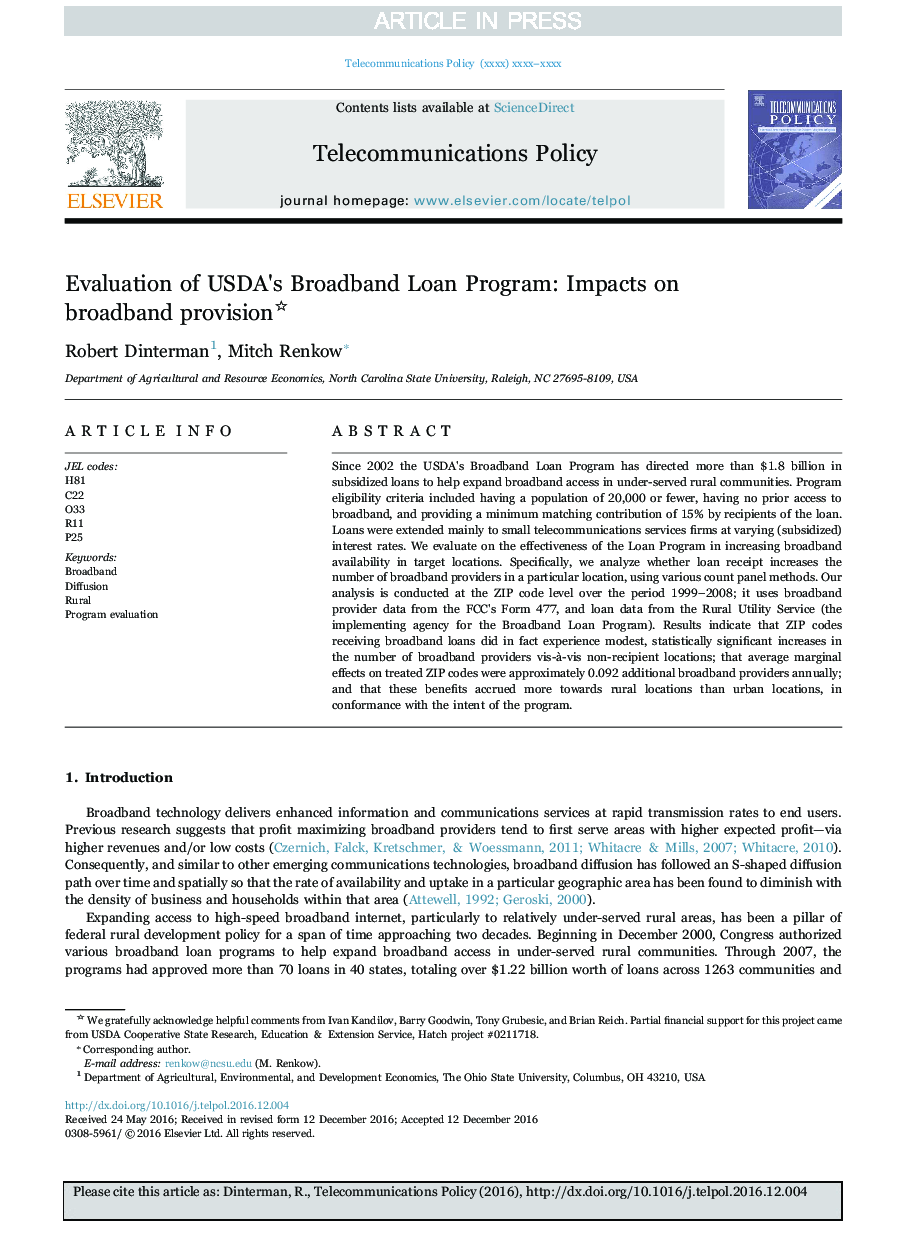| Article ID | Journal | Published Year | Pages | File Type |
|---|---|---|---|---|
| 4973305 | Telecommunications Policy | 2017 | 14 Pages |
Abstract
Since 2002 the USDA's Broadband Loan Program has directed more than $1.8 billion in subsidized loans to help expand broadband access in under-served rural communities. Program eligibility criteria included having a population of 20,000 or fewer, having no prior access to broadband, and providing a minimum matching contribution of 15% by recipients of the loan. Loans were extended mainly to small telecommunications services firms at varying (subsidized) interest rates. We evaluate on the effectiveness of the Loan Program in increasing broadband availability in target locations. Specifically, we analyze whether loan receipt increases the number of broadband providers in a particular location, using various count panel methods. Our analysis is conducted at the ZIP code level over the period 1999-2008; it uses broadband provider data from the FCC's Form 477, and loan data from the Rural Utility Service (the implementing agency for the Broadband Loan Program). Results indicate that ZIP codes receiving broadband loans did in fact experience modest, statistically significant increases in the number of broadband providers vis-Ã -vis non-recipient locations; that average marginal effects on treated ZIP codes were approximately 0.092 additional broadband providers annually; and that these benefits accrued more towards rural locations than urban locations, in conformance with the intent of the program.
Related Topics
Physical Sciences and Engineering
Computer Science
Information Systems
Authors
Robert Dinterman, Mitch Renkow,
